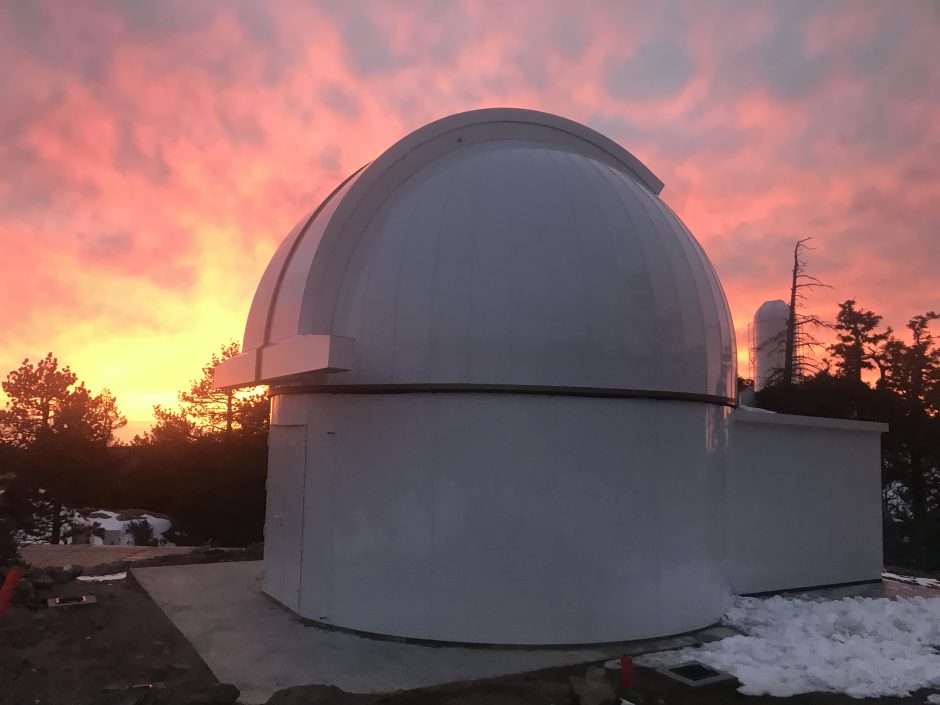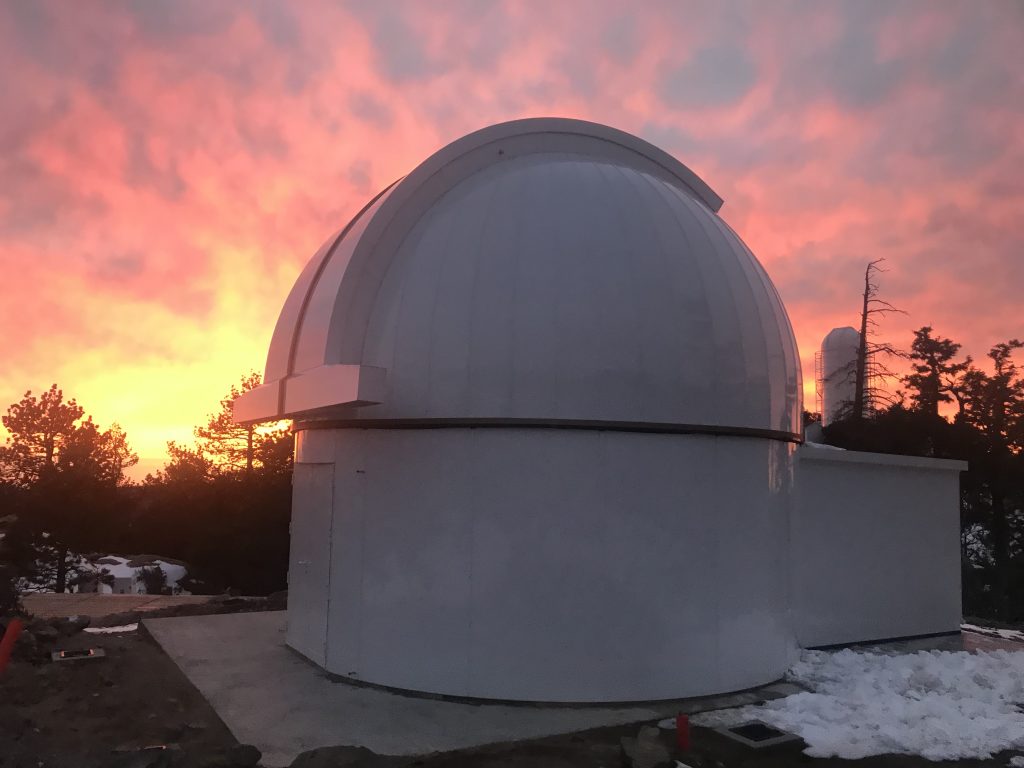Questioning theory can be worth it

Where few thought to look, the PlanetS co-funded telescope “SAINT-EX” is searching for new worlds. After a year of operation, the project has brought some exciting first results.
Atop a mountainous region, nearly three kilometers above sea level, overlooking pine forests and impressive rock formations it lies: The National Astronomical Observatory of Mexico in San Pedro Mártir. From there, the robot controlled and fully automatic 1-meter telescope «SAINT-EX» watches the night-sky. The PlanetS co-funded project aims to locate and describe planets beyond the boundaries of our solar system. Its focus are potentially habitable Earth-like rocky planets orbiting so called “ultra-cool” stars.

A clever alternative
“Ultra-cool”, in this case, might be misleading – the surface temperatures of such stars are still up to around 2’500 degrees Celsius. But relative to other stars, that is indeed quite cool. The Sun, for example, is around twice as hot.
There are good reasons to look for Earth-like planets in these kind of star systems, as the project’s principal investigator, Brice Demory, explains: “As of today, we don’t have the instrumental capability to detect Earth-size planets orbiting Sun-like stars in the habitable zone.”, he says. The reason is that the habitable zone – where liquid water could exist – is relatively far away from stars similar to the Sun. The large distance makes the probability of a transit – the planet passing by between the star and the telescope – very low. It is only about 0.5 percent. This chance increases the cooler the star is, as the habitable zone then falls closer towards the star. “For ultra-cool stars, it is about 5 percent. A factor 10 higher.”, the Professor at the University’s Center for Space and Habitability tells PlanetS.
And a further factor makes it easier to detect planets orbiting ultra-cool stars: they are much smaller than the Sun. Thus, when a planet passes by, a larger fraction of the light emitted by the star is blocked. This makes the transit more noticeable. The difference in this case is about a factor of 100, according to Demory.
Convincing numbers that beg the question: if it is so much easier to find Earth-like planets in front of ultra-cool stars, why have we only recently begun to look there?
False theories and new instruments
“It was previously thought that there could not be any planets orbiting such stars.”, Demory answers. And since there was thus little reason to pay any attention to these systems, few suitable telescopes were available to do so.

The SAINT-EX project, named after the author of the Little Prince, Antoine de Saint-Exupéry, set out to change that. It was equipped with instruments specifically suited to observe ultra-cool stars, which are both relatively dim and quite reddish in color.
With its precise instruments, the telescope has already confirmed two new planets that could potentially hold liquid water. Corresponding scientific publications are in preparation, as Prof. Demory tells PlanetS.
Support for CHEOPS
Furthermore, SAINT-EX also provides vital ground support for the space-based CHEOPS telescope. It does so, for example, by precisely monitoring objects that are investigated with CHEOPS. It thus serves as a control, with which it can be verified that measurements taken by the space-telescope are indeed signals caused by the objects and not by the spacecraft itself.
Ultimately, Brice Demory hopes, the data that SAINT-EX provides, will help finding answers to profound research questions, such as the necessary conditions for the emergence of life. So far, we only have one data point: Earth. But other environments might also support biological activity. Only by exploring the variety of exoplanets in habitable zones can we increase our understanding, the scientist tells us.
One thing is certain: we should expect to be surprised. If the research that motivated SAINT-EX has taught us anything, as Demory puts it, it’s that “We should not always trust the theory!”. Further results from the telescope in the Mexican mountains may strengthen his point.
Categories: External Newsletter, News
